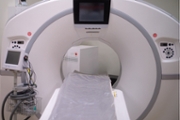|
|
|
|
| Top Stories in Critical Care |
A study published in the Archives of Disease in Childhood - Fetal and Neonatal Edition found that automated oxygen control reduced the duration of mechanical ventilation and supplemental oxygen for premature infants, compared with manual control. Length of stay in a neonatal unit was not affected, but infants in the automated control group had a lower rate of bronchopulmonary dysplasia and less need for home oxygen at discharge. |
|
A study in the CDC's Morbidity and Mortality Weekly Report that included 27 hospitals in 24 states found that nirsevimab was 80% effective in preventing ICU admissions and 83% effective at preventing acute respiratory failure among infants with respiratory syncytial virus. "This investigation demonstrated effectiveness of nirsevimab against severe RSV-related outcomes in a population of infants who received it up to six months before onset of respiratory symptoms," researchers wrote. |
|
|
The University of Pennsylvania Medical Center and STAT MedEvac have opened a critical care helicopter transport base at UPMC Muncy, to improve emergency response in rural north-central Pennsylvania. The base will have a dedicated STAT MedEvac helicopter and response team. This initiative aims to overcome challenges in rural emergency response by providing rapid access to crucial medical care during the "golden hour" following traumatic injuries.
|
|
|
|
|
Quickly benchmark where your health plan stands on CMS-0057 readiness. Identify key priorities, improve operational efficiency, and build a clear, cost-effective path to meet upcoming compliance milestones. Download the free Self-Assessment Guide today. |
|
|
|
| ADVERTISEMENT |  |
|
 
| Legislative and Regulatory Update |
|
The recent government shutdown has left some federal health websites and datasets outdated, posing risks as the flu season approaches. Key resources like the CDC's Morbidity and Mortality Weekly Report, wastewater surveillance data used to track the spread of COVID-19, flu and respiratory syncytial virus, and COVID-19 vaccine coverage data are not up to date, while some sites, such as FDA drug recalls, have been maintained.
| Full Story: Axios (11/18) |
|
|
|
| Free eBooks and Resources |
|
 
|
The Department of Education has removed nursing from the list of professional degree programs under a new law, a step that will limit the amount of federal student loans available to graduate students in nursing programs. "With a cap on federal student loans, fewer nurses will be able to afford graduate nursing education, such as Master's, [Doctor of Nursing Practice (DNP)], and Ph.D. degrees," said Olga Yakusheva, a professor of nursing and business of health at Johns Hopkins University.
|
|
|
|
The World Health Organization has reported sharp increases in drug-resistant gonorrhea. Resistance to the two first-line antibiotics increased from 2022 to 2024, rising from 0.8% to 5% for ceftriaxone and from 1.7% to 11% for cefixime. The antibiotics are the last recommended treatments for gonorrhea, but two new antibiotics have shown promise for treating the sexually transmitted infection.
|
|
|
| |
 |
| (Andrey Zhuravlev/Getty Images) |
The use of head CT scans in US emergency departments more than doubled from 2007 to 2022, rising to nearly 16 million annually, according to a study published in the journal Neurology. The study found disparities in scan usage, with Black patients 10% less likely to receive scans compared with White patients, Medicaid patients 18% less likely than those with Medicare or private insurance, and patients at rural hospitals 24% less likely than those at urban hospitals. |
|
|
| | | |
